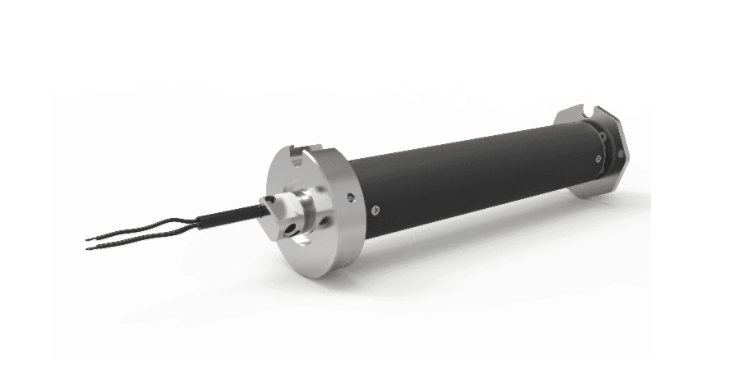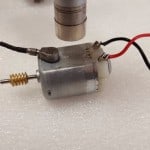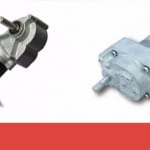Brakes in gear motors are accessories that let the motor maintain a correction position in electric transmission systems. Nowadays, its use has been divided into two major groups: conventional gear motors with brake and the new brakes which use electromagnetic systems.
Speed reducers with brakes may be used in several systems. Their use is safety equipment is quite interesting. For example, in automatic garage doors, the brake could lock the door at the top of its run to prevent it from falling due to gravity.
How do conventional gear motors with brake work, basically?
In regard to their operation, we can find two main options: open brake and closed brake. The difference between both models lies in the way in which the brake works. In some cases, it will be engaged when powered down, while in others, it will only work as long as it is powered up.
On the other hand, we can find other braking systems that employ ratchets as a mechanical brake. More specifically, the ratchet prevents it from turning in one direction, and allows it to turn in the other one.
What are the main features of brake control units?
– Start-up reaction time
Brake control systems enable the connection of the starter coil, to then activate the stopping coil. Response times of the brakes during start-up are a key aspect. The sooner a brake is activated, the lesser the heat and wear of a motor during start-up, and the greater the energy savings.
– Reaction times on disconnection
Reaction times when the flow of direct and alternating current stop are another important factor when designing gear motors with brakes. The faster the magnetic field is eliminated and the sooner the braking effect takes place, the sooner it will provide the motion we seek, and the safer the entire system will be. On the other hand, thanks to a high response speed, the braking precision required for braking improves, as well as the positioning during ungoverned service.
– Safety
The safety of these systems when a power shortage takes place is also an important factor. Likewise, another key factor for safety is offering a precise response to all nominal loads that affect the system.
– Noise levels
For any indoor application that requires low decibel levels, noise levels will have to be kept well in mind for these systems.
– Stopping precision
This is a key factor for positioning systems. Dispersion values in the braking run have to be kept in mind. This mechanical property may be limited if we shorten reaction times. In this manner, we achieve a greater stopping precision.
Gear motors with magnetic brakes:
These brakes can exert a greater force than mechanical ones, without resulting in greater shaft wear. Generally, they are more precise, since they can be controlled by electronic means and programming. In addition, these brakes have a greater brake torque, high load grip and significant heat dissipation capabilities.
Don´t miss this example: CLR project using a magnetic brake system
Gear motors with double disc brake
Another common solution in actuator braking systems is the application of 2 parallel motors with individual brakes. This is not a recommended solution, since its application results in greater costs and use of space.
To address this issue, the use of double disc brakes offers the possibility of designing a safe braking system with 2 partial brakes acting on a single actuator.
You might be interested in: Automatic doors: speed reducers for motion control and precision
Do you need to add a braking system to an actuator? Contact our team and we will study your case in order to offer you the best braking solution for your project.











